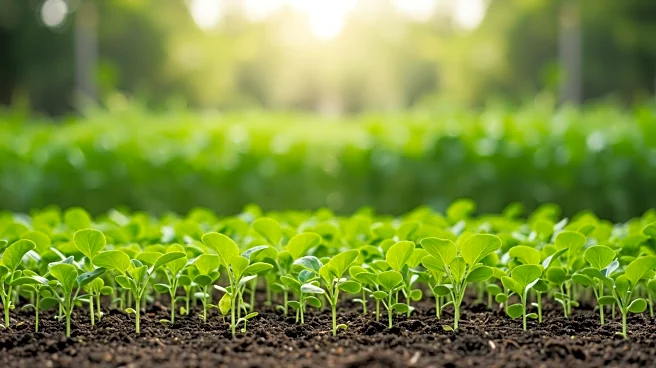What's Happening?
The Agricultural Inoculants Market is experiencing significant growth in the U.S., driven by the cultivation of corn, soybean, and canola. The market, valued at $9.21 billion in 2022, is projected to reach $21.24 billion by 2031, with a CAGR of 11.01%. Inoculants, which include beneficial microorganisms like bacteria and fungi, enhance plant growth and soil health while protecting crops from diseases. This growth is fueled by the rising demand for sustainable farming practices and the adoption of bioproducts as alternatives to synthetic fertilizers and pesticides.
Why It's Important?
The expansion of the agricultural inoculants market reflects a shift towards more sustainable and eco-friendly farming practices. This trend is crucial for reducing the environmental impact of agriculture and promoting soil health. The increased use of inoculants can lead to improved crop yields and resilience, benefiting farmers economically and contributing to food security. The market growth also indicates potential opportunities for innovation and investment in agricultural biotechnology.
What's Next?
Companies in the agricultural sector are likely to continue developing new inoculant formulations that offer enhanced efficiency and compatibility with other seed treatments. The focus will be on expanding the application methods and geographic reach of these products. Stakeholders may also explore integrating inoculants with digital farming platforms to optimize their use and monitor crop performance.
Beyond the Headlines
The growth of the inoculants market highlights the broader movement towards sustainable agriculture and the increasing importance of biotechnology in farming. It raises ethical considerations about the balance between technological advancement and traditional farming practices. The market's expansion may also influence regulatory policies related to agricultural inputs and environmental protection.














